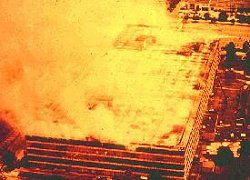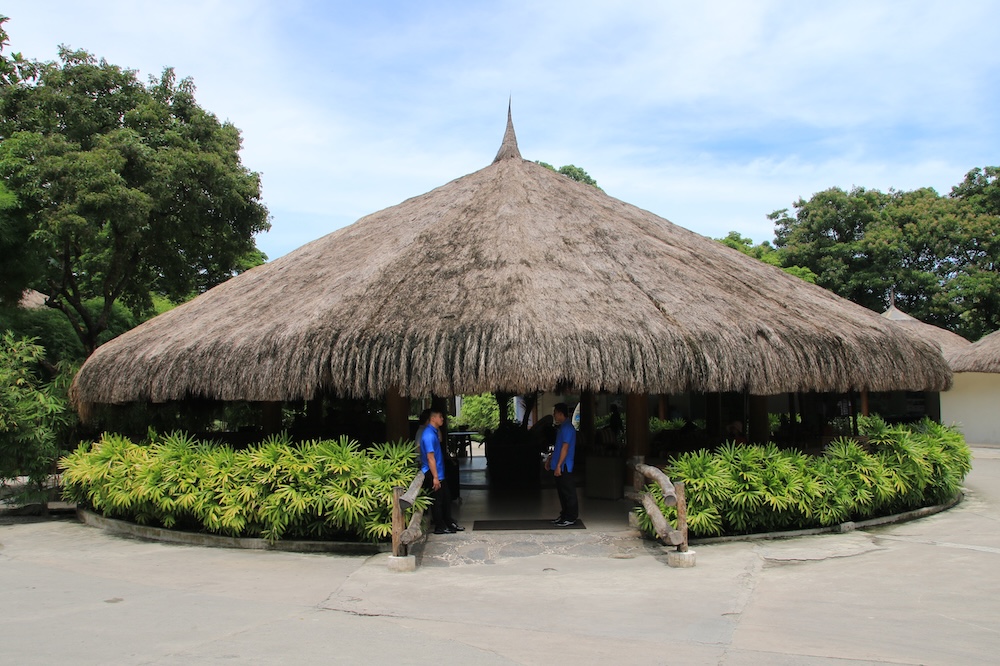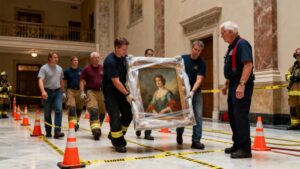Protecting Intangible Heritage from Fire Risk
Fires pose a significant threat to collections, archives, records, and living traditions that underpin cultural continuity.
A paradoxical aspect of cultural heritage safety is the protection from fire of intangible heritage that, as intangible, should be free from fire-risk.
Furthermore, while the devastation caused by fires in celebrated monuments, historic churches, and cultural landmarks frequently garner media attention and public interest, an equally critical—yet often overlooked—facet of heritage vulnerability lies in the protection of museum collections held in storage, archival records, and intangible heritage assets.
As climate change intensifies environmental hazards and fire risks become increasingly prevalent, cultural institutions face the compounded challenge not only of safeguarding buildings but also the intangible infrastructure of heritage: the collections, archives, records, and living traditions that form the foundation of cultural continuity.
Museum Collections in Storage: A Hidden Vulnerability
Numerous museums, libraries, and cultural institutions possess extensive reserves of objects, artworks, documents, and historical artefacts that remain unexposed to the public but are stored in specialised facilities on- or off-site.

These reserves frequently house some of the most rare and valuable artefacts, encompassing archaeological discoveries, manuscripts, photographic archives, and natural history specimens.
Incidents involving fires in storage facilities, such as warehouse blazes or basement fires, can be catastrophic, resulting in irreplaceable loss even if the primary museum building remains unharmed.
However, emergency preparedness measures for storage areas are often inadequate compared to those employed for public exhibition spaces.
Fire detection, suppression protocols, and evacuation plans may be less rigorously maintained, particularly in older or financially constrained institutions.
Museum storage losses, whether attributed to electrical malfunctions, arson, or wildfires, underscore the necessity of robust risk assessments, updated fireproofing standards, and staff training specifically focused on these ‘silent’ collections.
Intangible Heritage at Risk: Beyond Objects and Buildings
Intangible heritage encompasses oral histories, traditional skills, ritual practices, folklore, musical traditions, and digital archives—heritage that is not embodied in physical objects or buildings but in knowledge, memory, and communication. Fires can destroy not only the platforms and media on which this heritage is recorded (e.g., tapes, hard drives, manuscripts), but also the spaces where these traditions are practiced, learned, or transmitted. Alarmingly, loss of intangible heritage may only become visible decades later, when a generation’s memory or skills are found to be irretrievably missing.
The challenge extends to digital assets: many oral histories, images, and records are now digitized, but if servers, hard disks, or cloud backups are not adequately protected against fire or environmental catastrophe, large swathes of historical record may be wiped out.
Applicable standards and guidelines
A diverse spectrum of standards is applicable to archives and libraries, each tailored to address a specific facet of safety:
- International Standards. ISO 11799:2015 defines optimal conditions for storing archives and library materials, including fire prevention, environmental controls, and emergency planning.
- ISO 21110:2019 provides recommendations for organisations like museums and archives on preparing for, responding to, and recovering from incidents like fire.
- NFPA 909: Code for the Protection of Cultural Resource Properties is widely used for assessing fire protection strategies for buildings and contents, including storage and archive spaces.
- ICCROM’s ‘Risk Management – A Guide for Cultural Heritage’ offers practical methods for assessing and planning emergencies in museums, including storerooms and archives.
- ICOM’s ‘Disaster Preparedness and Response Toolkit’ provides step-by-step guidance on preparing collections for fire and other emergencies.
- UNESCO’s ‘Manual for the Safeguarding of Intangible Cultural Heritage’ emphasises the need for copies, backups, and distributed practices to prevent the loss of unique knowledge in single-point disasters.
- NFPA 232 (Standard for the Protection of Records) for archives/records storage
- BS EN 16893:2018 Conservation of Cultural Heritage for archive and library premises.
- Digital Heritage Protection. ISO 27001: Information Security Management Systems. It is a reference for securing digital assets, including backup procedures and physical security of servers against fire, for museums with digitized collections or oral history archives.
- OAIS Model (Open Archival Information System), ISO 14721:2012, is an international standard that defines a framework for sustainable digital preservation and archiving systems. It’s widely used by institutions like libraries, archives, museums, scientific data centres, and government agencies to ensure digital information remains accessible, authentic, and usable: The standard provides a common language and guidelines for organisations to structure, manage, and share digital preservation activities. It establishes best practices for ingesting, managing, preserving, and providing access to digital content.
Emergency Planning: Lessons and Recommendations
A diverse range of activities can be considered to enhance emergency management capabilities.
- Conduct comprehensive fire risk audits not only for public exhibition spaces but also for all sites where heritage assets are stored or managed.
- Invest in fire-resistant materials, state-of-the-art detection and suppression systems, and accessible fire exits for archives and storage facilities.
- Develop redundant backups (physical and digital) for documentary and intangible heritage—this includes off-site and cloud-based copies, as well as “community memory projects” that spread knowledge among wider groups.
- Regular training for staff and communities in emergency protocols and recovery strategies, including the salvage and documentation of collections after a disaster.
- Foster collaboration with local fire brigades, emergency planners, and insurance experts to tailor preparedness for the specific vulnerabilities of heritage storage.
Conclusion
The safeguarding of cultural heritage from fire must extend beyond iconic monuments to encompass the extensive and often imperceptible networks of collections and practices that underpin cultural significance.
Raising awareness of the fire risks associated with stored and intangible heritage can assist museum professionals, policymakers, and communities in devising resilient strategies that preserve history in all its manifestations for future generations.






